COMSOL has the best multiphysical simulation capabilities in my experience. Technical support from Elisa at TECHNIC as well as the engineers at COMSOL has been great.
COMSOL is an important part of our research in plasma physics. We use it in the design of plasma systems and it helps us to obtain a greater understanding of the underlying physics. We have always valued the quick support from TECHNIC and COMSOL and it has been a pleasure to work with them.
Comsol has become a valuable part of our design and decision making process. The exceptional flexibility and access to the physics and solvers in Comsol has allowed us to have deeper understanding on thermomechanical solutions. Technic and Comsol have always been quick and helpful to resolve any issues and provide helpful advice on their products.
At Scion we use COMSOL Multiphysics to understand energy processes, such as the interplay of non-linear solid mechanics and heat & mass transfer during biomass compaction, to design new or more efficient processes.
We use COMSOL Multiphysics to design the customised muffler. With it, we can simulate the insertion loss at different spectrum with different muffler designs.
Designers of RF and microwave devices need to ensure that the electromagnetics simulations are reliable and robust. Traditional electromagnetic modelling lets you examine RF physics alone, but no real-world product operates under just one branch of physics. To see how other physics phenomena affect the design, you need multiphysics modelling, which allows you to extend the model to include effects such as temperature rise, structural deformations, and fluid flow.
With the RF Module expansion of the COMSOL Multiphysics® simulation platform, you can analyse RF designs in multiphysics scenarios, including microwave and RF heating, all within the same software environment.
Products, components, and devices can always be improved. With the RF Module, you can optimise designs by investigating effects such as electromagnetic wave propagation, microwave heating, and RF heating — ensuring that you create the best products possible and get ahead of others in your field.
In the fast-paced RF, microwave, and millimeter-wave industries, product development must keep up with advancements in technology. For example, antennas and RF front ends; including filters, couplers, power dividers, and impedance matching circuits; should be compatible with future developments, such as the 5G MIMO network, Internet of Things (IoT), and SatCom.
It is also important to evaluate RF interference and compatibility in wireless communication platforms for the seamless operation of your products for developing applications, including wearable devices, autonomous vehicles, and state-of-the-art microwave and RF products.
Ensure that your organisation is ready to embrace these new technologies, and whatever comes next, with the COMSOL® software.
When you expand COMSOL Multiphysics® with the RF Module, you can access features for specialised RF and microwave modelling, in addition to the core functionality of the COMSOL Multiphysics® software platform.
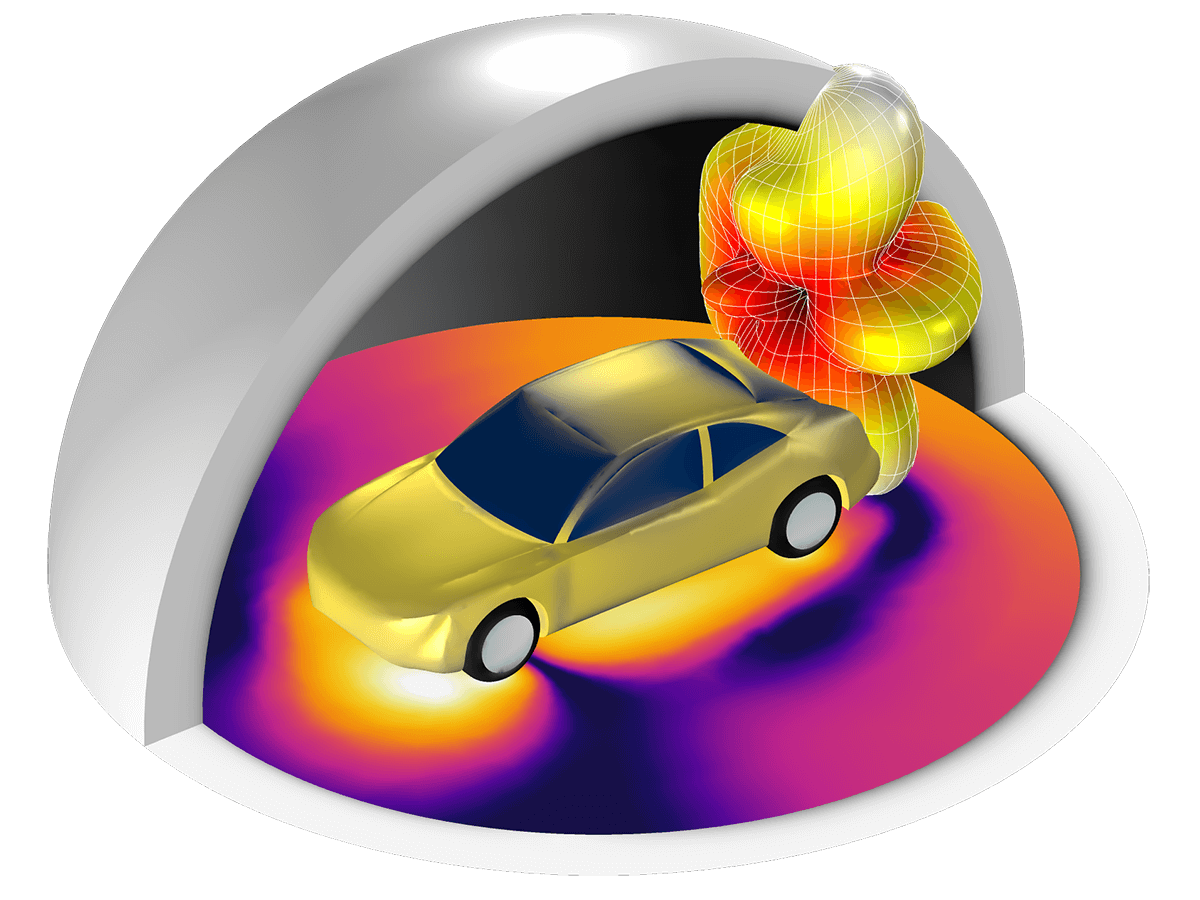
Explore the features and functionality of the RF Module in more detail by expanding the sections below.
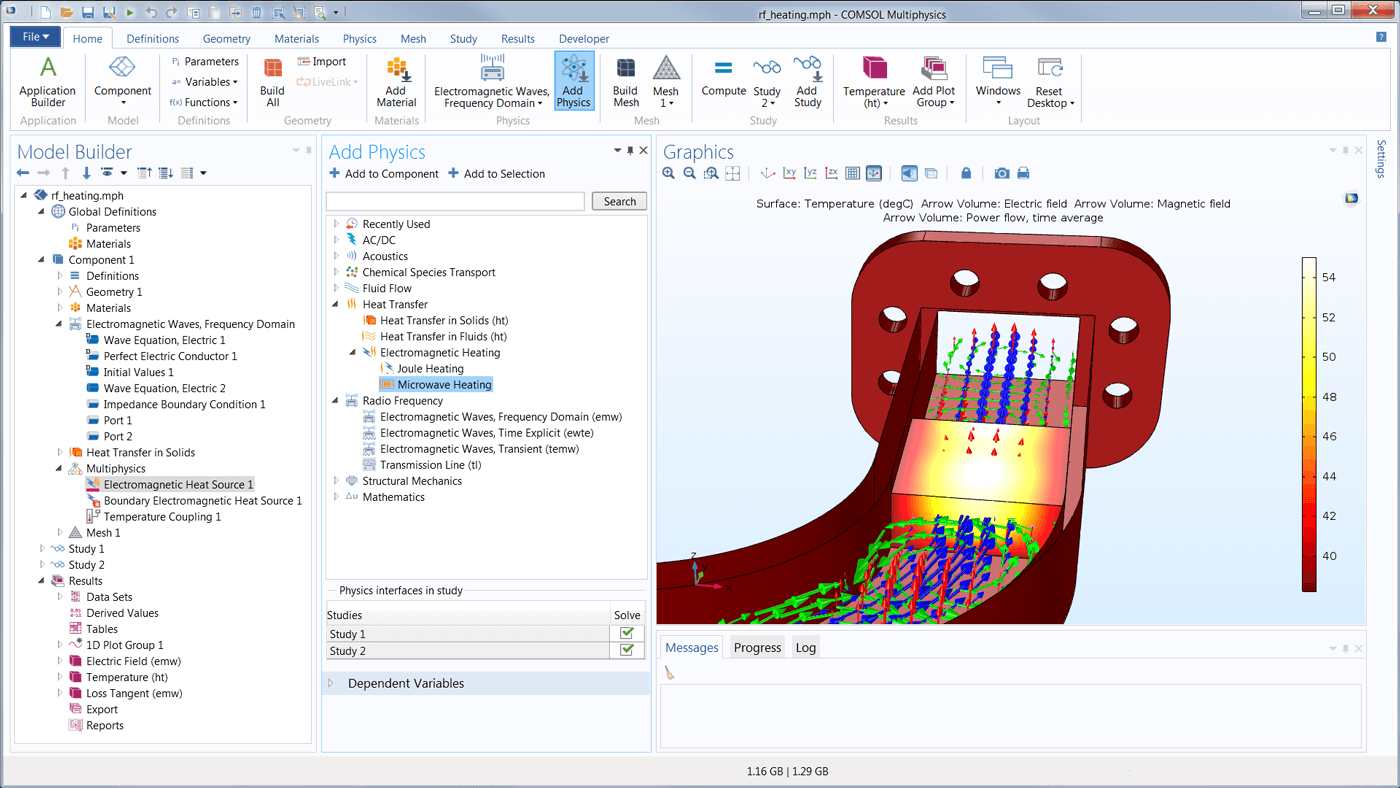
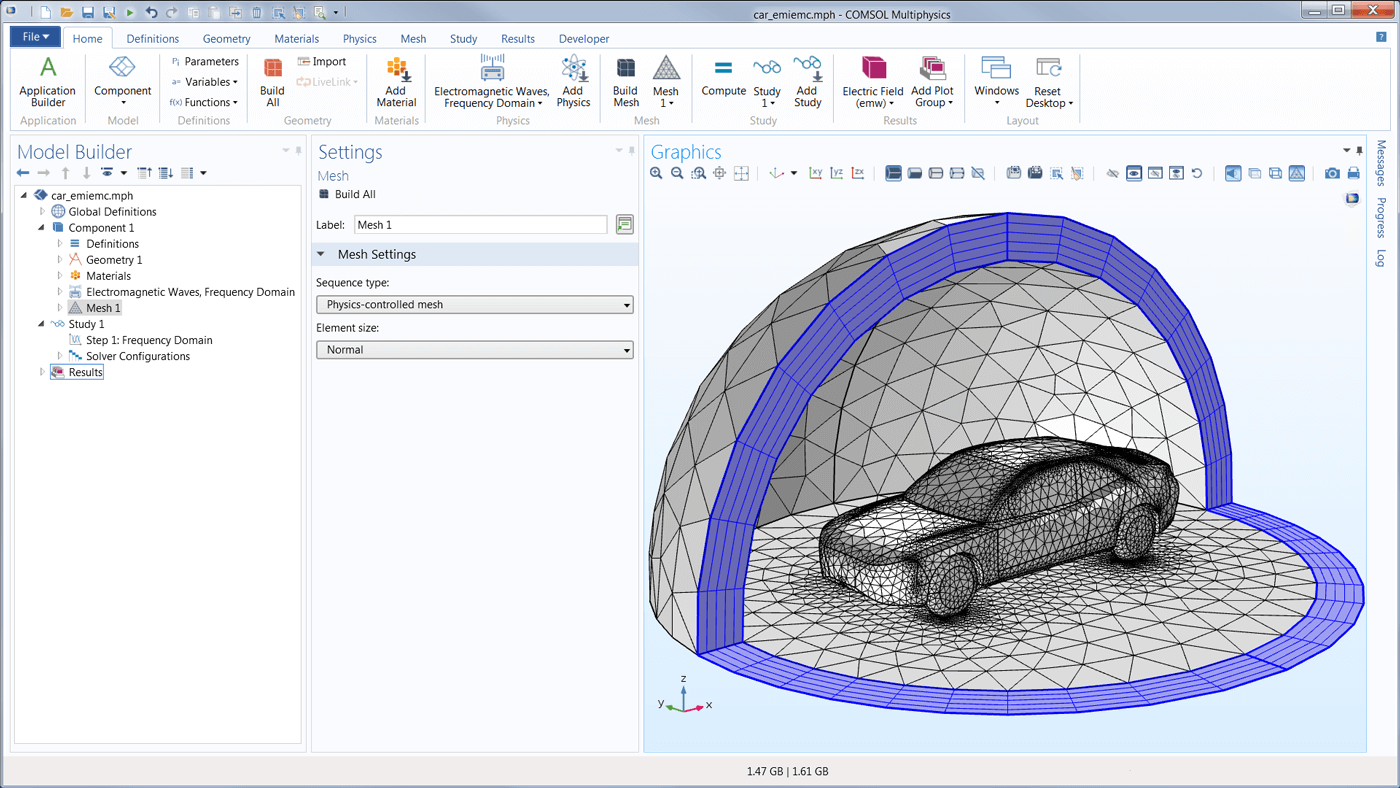
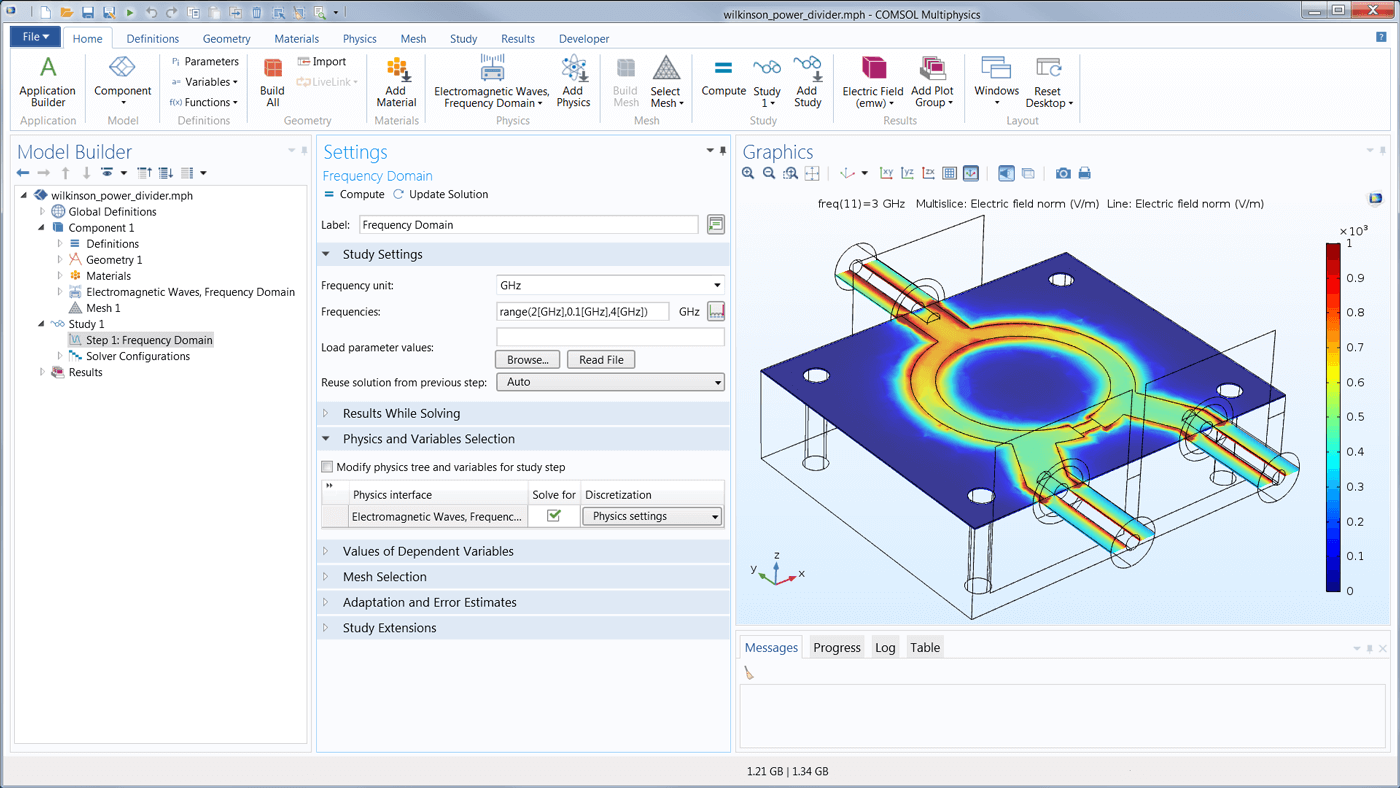
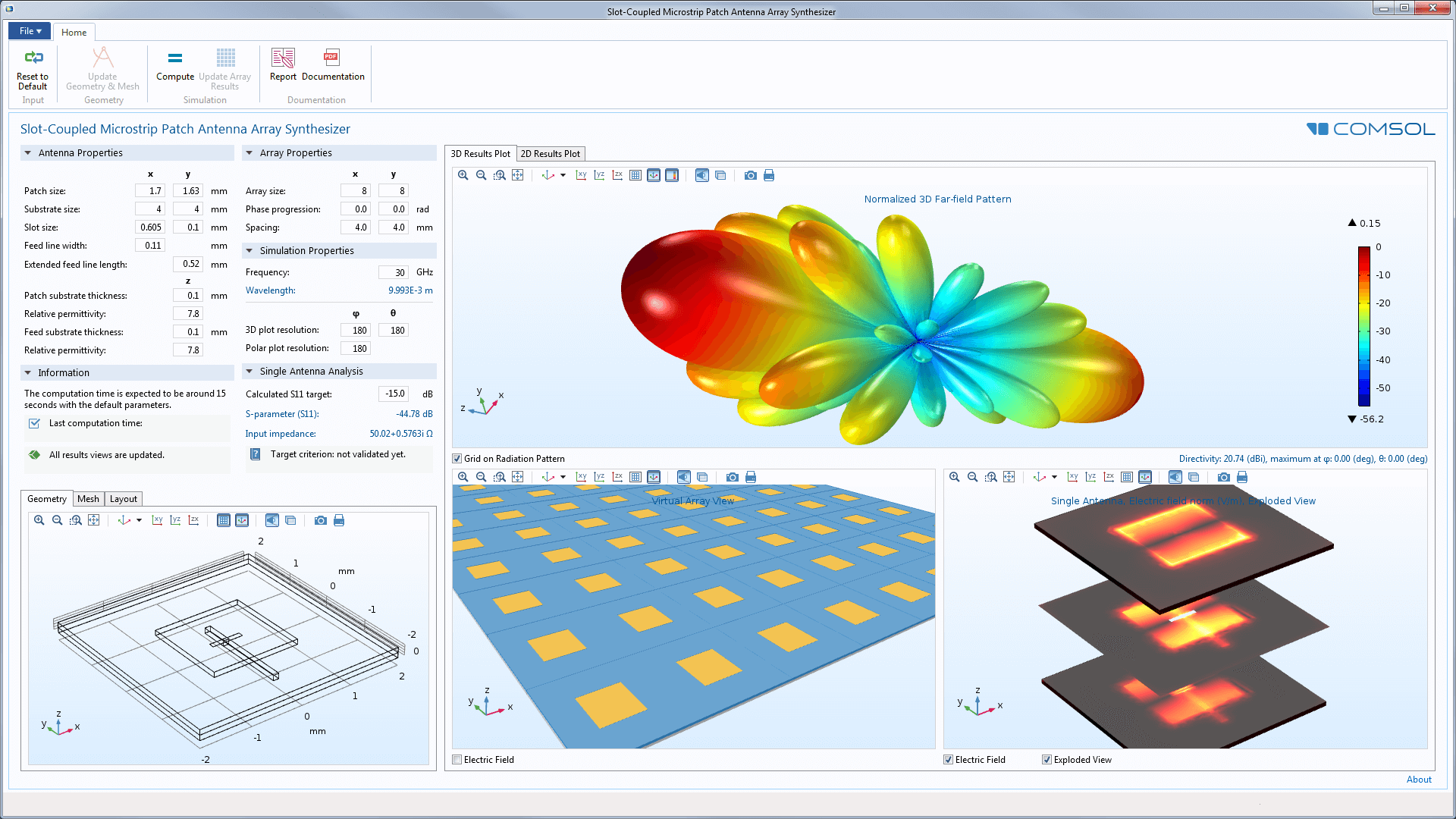
Think of the time and energy you would be able to devote to new projects if you did not have to run repetitious simulation tests for other people on your team. With the Application Builder, built into COMSOL Multiphysics®, you can build simulation applications that further simplify the simulation workflow by enabling you to restrict the inputs and control the outputs of your model so that your colleagues can run their own analyses.
With applications, you can easily change a design parameter, such as gain or frequency in an antenna, and test it as many times as you need without having to rerun the entire simulation. You can use applications to run your own tests more quickly or distribute applications to other members of your team to run their own tests, further freeing up your time and resources for other projects.
The process is simple:
You can expand the capabilities of simulation throughout your team, organisation, classroom, or customer base by building and using simulation applications.
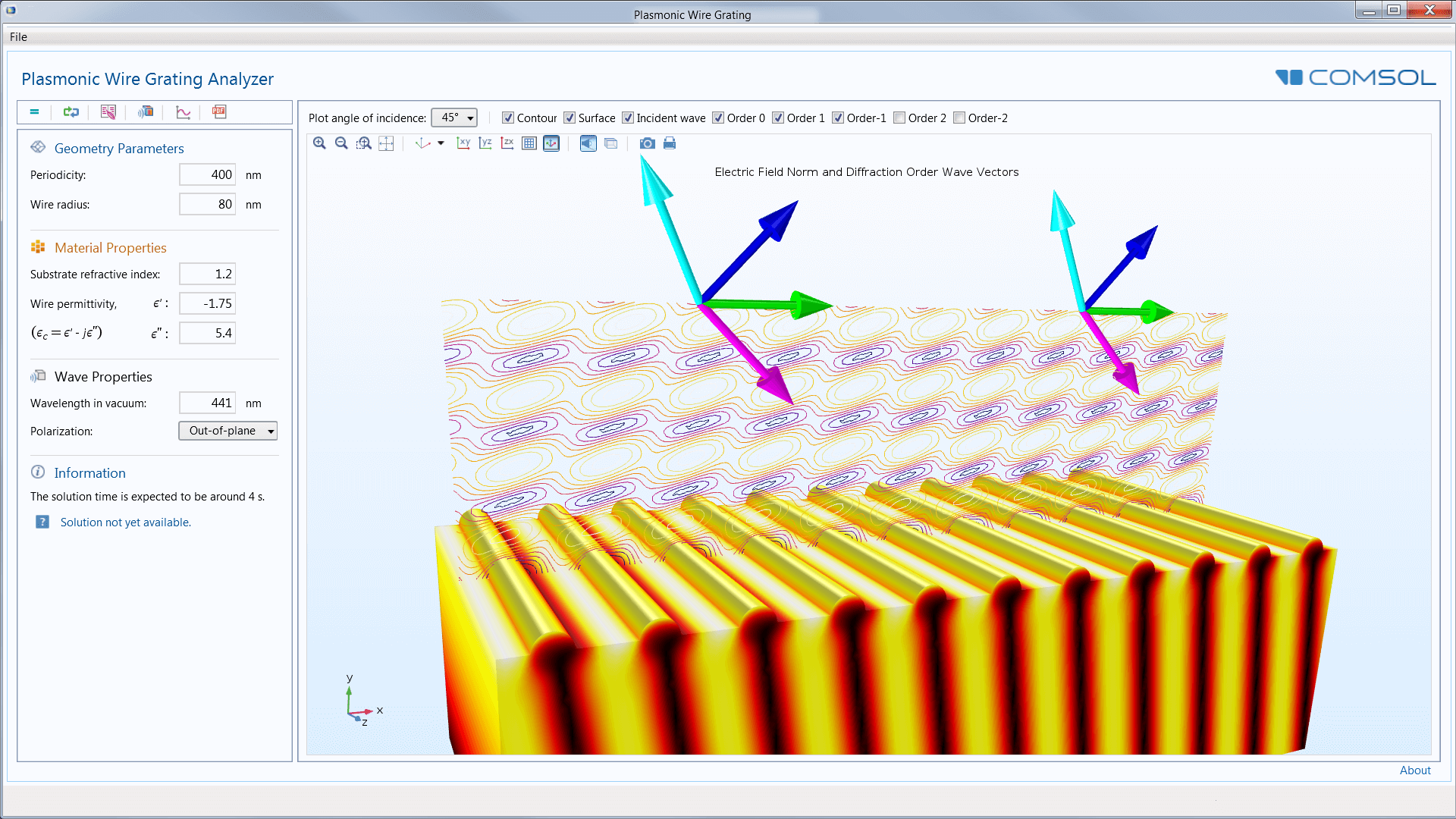
In order for RF products, devices, and components to safely operate in the real world, the simulated designs need to be viable. You can analyse how multiple physics affect RF designs by using the COMSOL Multiphysics® software and the specialised add-on RF Module.
Most of the RF components, devices, and products you design are affected by some other branch of physics, whether it be heat transfer, plasma, or structural mechanics, to name a few. For the most accurate study possible, you need to be able to simultaneously examine a variety of these effects. You can couple all of the necessary physical effects in the same modelling environment with the RF Module expansion of COMSOL Multiphysics®, thus streamlining your research.
Is there another specific physics area affecting your end-product that you need to investigate? You can mix and match the RF Module with any add-on module or LiveLink™ product from the product suite, all of which seamlessly integrate with the core COMSOL Multiphysics® software platform. This means that your modelling workflow remains the same regardless of the application area or physics you are modelling.
In order to fully evaluate whether or not the COMSOL Multiphysics® software will meet your requirements, you need to contact us. By talking to one of our sales representatives, you will get personalised recommendations and fully documented examples to help you get the most out of your evaluation and guide you to choose the best license option to suit your needs.
Fill in your contact details and any specific comments or questions, and submit. You will receive a response from a sales representative within one business day.